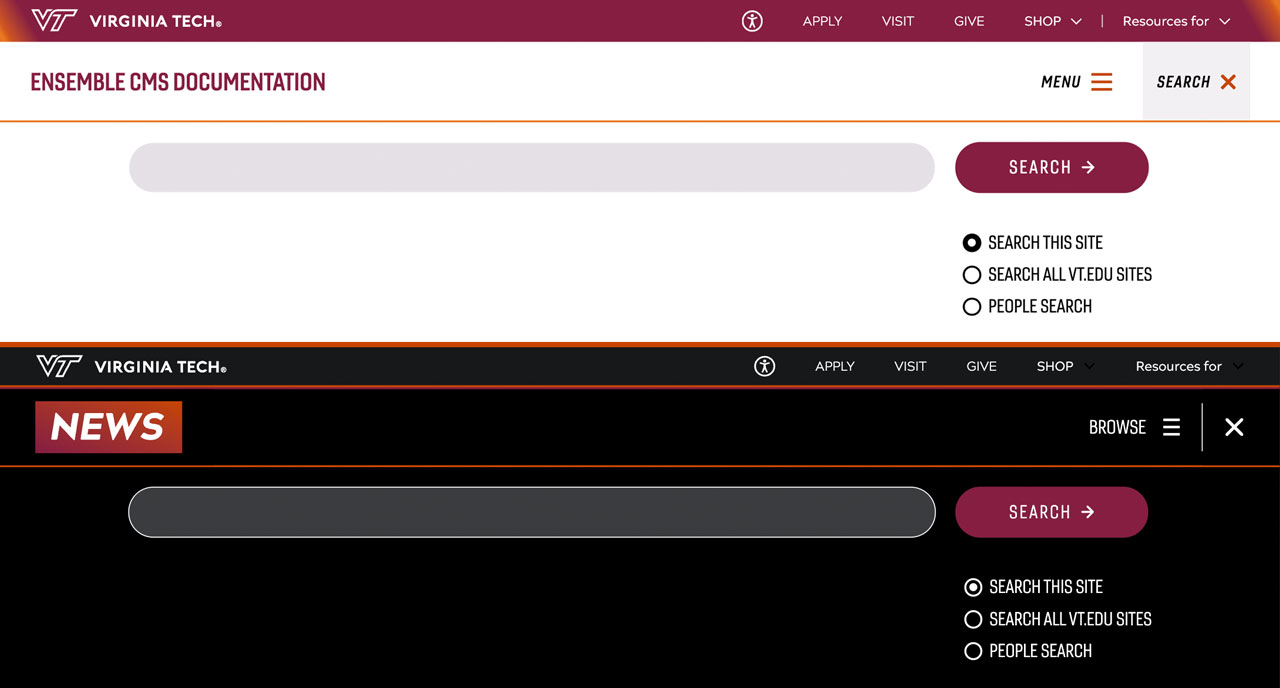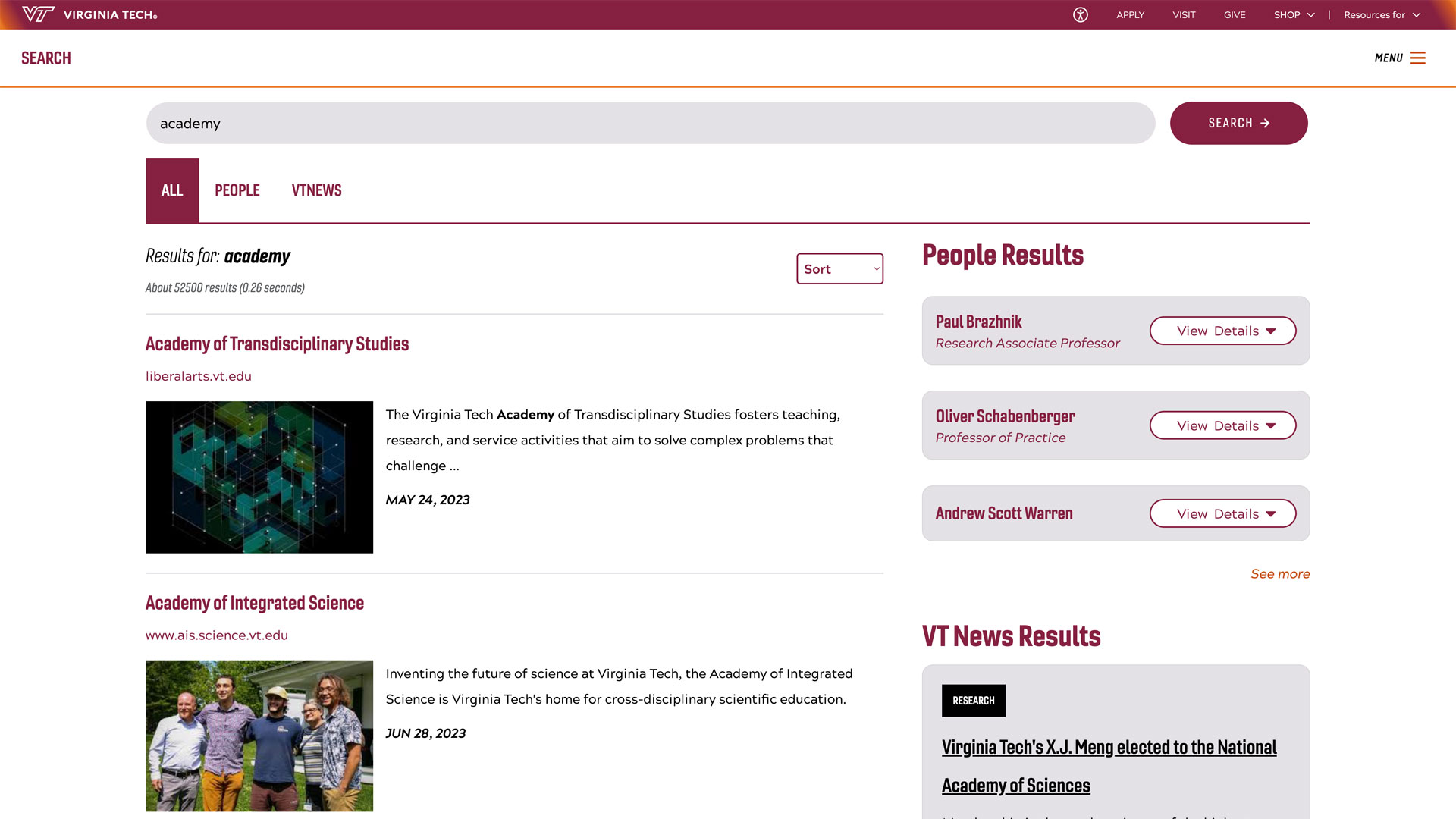Experience art across space and time
'Carving out Creativity' invites people into a multisensory experience simultaneously with others across Virginia as Virginia Tech celebrates the grand opening of its new academic building in Alexandria on Feb. 28.

A new Virginia Tech art installation invites people into a multisensory experience simultaneously with others across Virginia.
The work is the result of a vast array of university expertise harnessing both cutting-edge technology and innovative artistry, but its foundation is perhaps as timeless as it is simplistic.
“This is a very complex project, but it really just boils down to bringing people together,” said Lisa McNair, deputy director of Virginia Tech’s Institute for Creativity, Arts, and Technology (ICAT). “It's human connection forged from arts-based scholarship and technology-based research.”
“Carving out Creativity” invites visitors to see and touch a stone sculpture as well as a virtual representation of a sculpture in a different location. It provides a tactile experience, allowing visitors to “feel” observers at other locations while at the same time experiencing visual and auditory representations of the artists’ brain activity during the sculpture’s creation.
“It’s one thing to just look at data and statistics and even art, but it’s a whole other experience to see it, hear it, and feel it happening around you,” said McNair, a professor of engineering education. “And to touch it and also feel it being touched from somewhere else, that’s experiencing art and technology in a very different way than most of us are used to.”
The installation arrives as Virginia Tech celebrates its interwoven connectivity across distance with the grand opening of its new academic building in Alexandria on Feb. 28. The building will host one of the installation’s four displays. Other Virginia locations include:
- The Cube in the Moss Arts Center in Blacksburg
- Taubman Museum of Art in Roanoke
- Torpedo Factory Art Center in Alexandria
Supported jointly by ICAT and the Innovation Campus through a Science, Engineering, Arts, and Design grant, “Carving out Creativity” grew out of a desire to illustrate the interconnected nature of Virginia Tech’s campuses, according to the institute’s executive director, Ben Knapp. Working with the former chief operating officer of the Innovation Campus, Ken Smith, a call for project proposals went out. “Carving out Creativity” was selected because of its creative approach in connecting locations as well as its proposed investigation of brain connectivity via electroencephalography (EEG) technology.
“The beautiful thing about this project is that it showcases, using an array of different technologies, interaction through the sense of touch across the communities of Virginia Tech. Simultaneously the project shows, through the measurement of brain waves [the EEG], how the ancient practice of sculpting connects people together,” Knapp said. “So it is both the tactile experience and the underlying brain activity – that connect when we work together.”


McNair said the project idea began to develop alongside her future collaborators Dushan Boroyevich, University Distinguished Professor of Electrical and Computer Engineering, and Hiromi Okumura, collegiate assistant professor of visual arts. She then approached ICAT’s David Franusich and Tanner Upthegrove, a multimedia designer and a multimedia engineer, respectively, with a concept inspired by those conversations and her experience with the Backyard Stone Carvers in nearby Newport.
“ICAT is a place where you can really let your imagination run wild and then you have to scope it a little bit,” McNair said. “So I went to Tanner and David and said, ‘Is this possible or is this just me dreaming?’”
With a goal of exploring shared patterns of creativity, the team leveraged Julia Basso’s expertise in exploring the brain during group activities. A behavioral and neural scientist and assistant professor in the Department of Human Nutrition, Foods, and Exercise, Basso is well known for her work using EEG technology to capture brain activity during movement and dance. With her assistance, the team employed a similar method during stone carving sessions with the group in Newport. The community artisan group was founded by Darcy Meeker who died in 2022 and left a legacy of communal art creation and the encouragement of art exploration through touch.
Other collaborators with “Carving out Creativity” include Atlas Vernier, a graduate student studying industrial and systems engineering, and Linda Correll, a backyard stone carver.
As Basso’s team processed the collected data, Upthegrove and Franusich began to explore the technical aspects of the multifaceted display.
“We wanted to represent the findings in a way that was accessible, informative, and interesting, and in the form of an art installation,” Upthegrove said. “And another twist is that we wanted different parts of it to be separated by distance.”
The result of the efforts was four interactive kiosks in different locations with a real stone on one side and a virtual stone on the other. Users can sense the virtual stone with the aid of a haptic device and users touching the real stone will receive vibrations from users doing so in a different location. And while users are experiencing the sculptures, they also will be surrounded by visuals of the group carving the sculptures as well as visualization and sonification of their brain data collected during that process.
“So you’ll be experiencing the stone carving in the environment around you and interacting with the finished pieces at a distance with someone else,” Franusich said. “It’s kind of like, what does it feel like to experience art together while also being immersed in creating art.”
Franusich and Upthegrove hope the project opens up doors for more researchers to explore novel ways of presenting complex data and helps to further push the boundaries of virtual connections.
“Looking at how we can make these remote connections more tangible, interesting, and empathic, I think this is a great beginning for pushing those conversations further,” Upthegrove said.
Knapp said he believes the project highlights the unique connective capabilities of Virginia Tech’s immersive spaces and illustrates the potential of the cross-disciplinary projects across the university’s campus locations in Alexandria, Blacksburg, and Roanoke.
“What really makes this project special is the innovation that brings together computer science, neuroscience, art, and creative processes in a way that connects university locations across the Commonwealth,” Knapp said.
“Carving out Creativity” is available to the public on the following dates:
- Virginia Tech Innovation Campus, Alexandria, Feb. 28-May 18
- The Cube at Moss Arts Center, Blacksburg, Feb. 27-28
- Taubman Museum of Art, Roanoke, Feb. 27-May 4
- Torpedo Factory Arts Center, Alexandria, Feb. 1 - May 18




